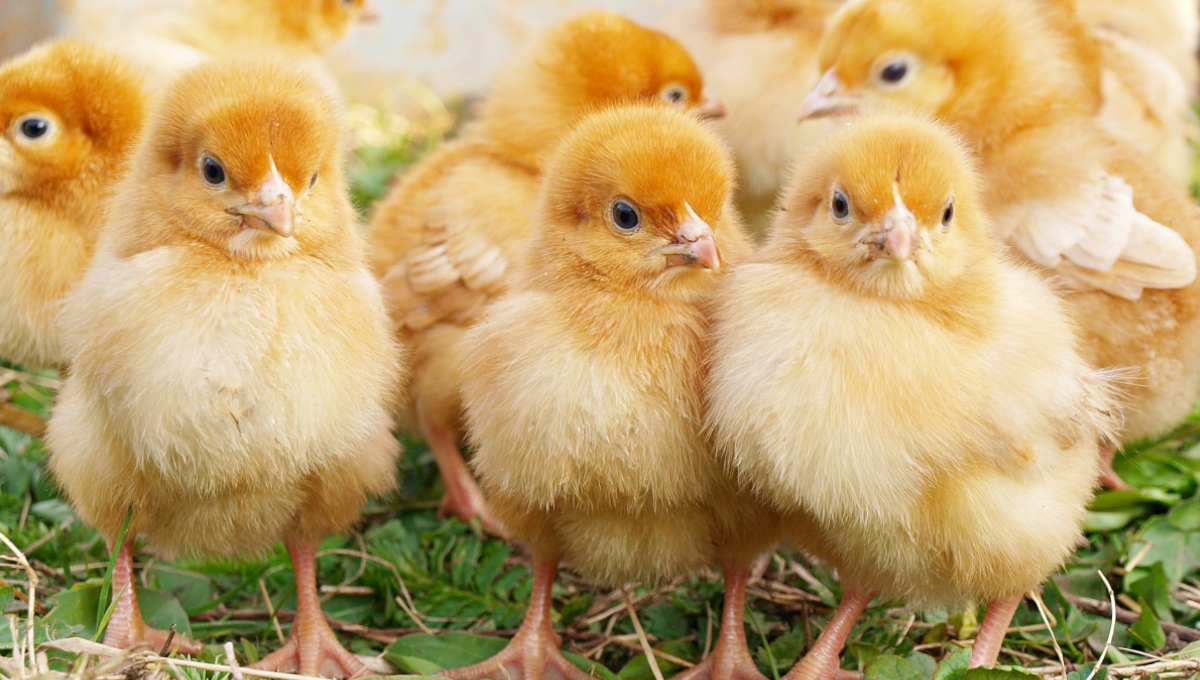One person has died and more than 350 additional people have been infected with Salmonella from backyard poultry flocks, according to a CDC outbreak update. A third of the ill people are children younger than 5 years old.
The Centers for Disease Control and Prevention last reported on the outbreak on May 20. Now there are 465 confirmed patients across 42 states with 86 of the people requiring hospitalization. Illnesses started Jan. 14 with the most recent confirmation on June 1. Ill people range in age from less than 1 year to 88 years old, with a median age of 31. Tests on samples from patients showed 85 percent of the outbreak strains of Salmonella are antibiotic resistant, to varying degrees.
“Epidemiologic evidence shows that contact with backyard poultry such as chicks and ducklings is the likely source of these outbreaks,” according to the CDC update.
“In interviews, ill people answered questions about animal contact in the week before they became ill. . . . Ill people reported buying poultry from various sources, including agricultural stores, websites, and hatcheries. Regardless of where poultry are purchased, they can carry Salmonella germs that can make people sick. Backyard poultry owners should always follow steps to stay healthy around their flocks.
Consumer advice from the CDC
You can get sick with a Salmonella infection from touching backyard poultry or their environment. Backyard poultry can carry Salmonella bacteria even if they look healthy and clean and show no signs of illness. Follow these tips to stay healthy with your backyard flock:
Wash your hands.
- Always wash your hands with soap and water right after touching backyard poultry, their eggs, or anything in the area where they live and roam.
- Adults should supervise handwashing by young children.
- Use hand sanitizer if soap and water are not readily available.
Be safe around poultry.
- Don’t kiss backyard poultry or snuggle them and then touch your face or mouth.
- Don’t let backyard poultry inside the house, especially in areas where food or drink is prepared, served, or stored.
- Set aside a pair of shoes to wear while taking care of poultry and keep those shoes outside of the house.
- Don’t eat or drink where poultry live or roam.
- Stay outdoors when cleaning any equipment or materials used to raise or care for poultry, such as cages and containers for feed or water.
Supervise kids around poultry.
- Always supervise children around poultry and while they wash their hands afterward.
- Children younger than 5 years of age shouldn’t handle or touch chicks, ducklings, or other poultry. Young children are more likely to get sick from germs like Salmonella.
Handle eggs safely.
- Collect eggs often. Eggs that sit in the nest can become dirty or break.
- Throw away cracked eggs. Germs on the shell can more easily enter the egg though a cracked shell.
- Eggs with dirt and debris can be cleaned carefully with fine sandpaper, a brush, or a cloth.
- Don’t wash warm, fresh eggs because colder water can pull germs into the egg.
- Refrigerate eggs after collection to maintain freshness and slow germ growth.
- Cook eggs until both the yolk and white are firm. Egg dishes should be cooked to an internal temperature of 160°F (71°C) or hotter. Raw and undercooked eggs may contain Salmonella bacteria that can make you sick.
For a complete list of recommendations, visit the Healthy Pets, Healthy People website section on backyard poultry.
The CDC outbreak update page also has safety information for stores that sell or display live poultry and mail order hatcheries.
About Salmonella infections
Chickens infected with Salmonella may not appear sick. Similarly, food contaminated with Salmonella bacteria does not usually look, smell, or taste spoiled. Anyone can become sick with a Salmonella infection. Infants, children, seniors, and people with weakened immune systems are at higher risk of serious illness because their immune systems are fragile, according to the CDC.
Anyone who has had contact with live poultry and developed symptoms of Salmonella infection should seek medical attention. Sick people should tell their doctors about the possible exposure to Salmonella bacteria because special tests are necessary to diagnose salmonellosis. Salmonella infection symptoms can mimic other illnesses, frequently leading to misdiagnosis.
Symptoms of Salmonella infection can include diarrhea, abdominal cramps, and fever within 12 to 72 hours after eating contaminated food. Otherwise, healthy adults are usually sick for four to seven days. In some cases, however, diarrhea may be so severe that patients require hospitalization.
Older adults, children, pregnant women, and people with weakened immune systems, such as cancer patients, are more likely to develop a severe illness and serious, sometimes life-threatening conditions.
(To sign up for a free subscription to Food Safety News, click here.)

